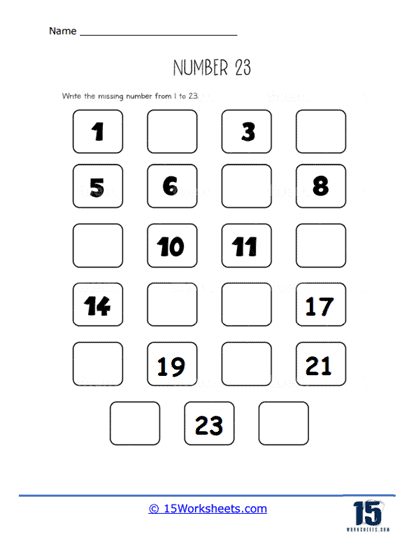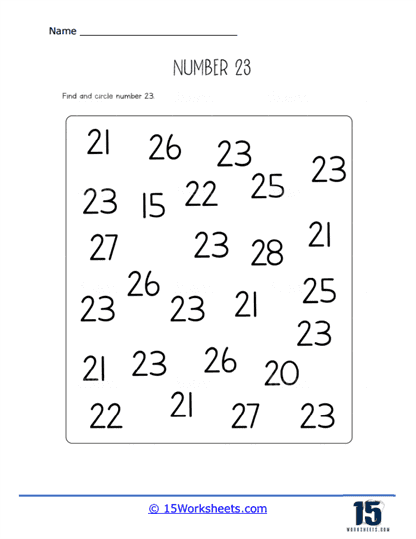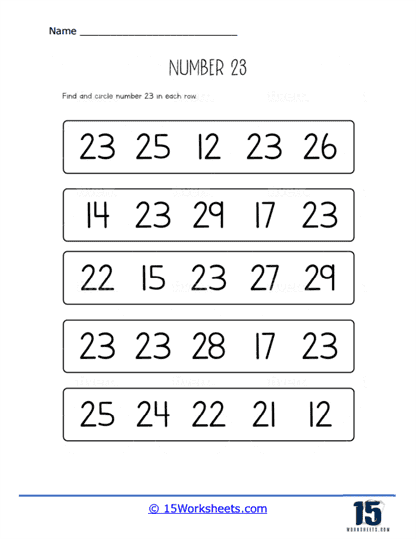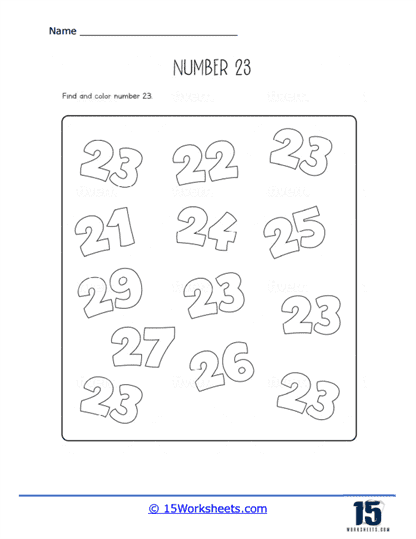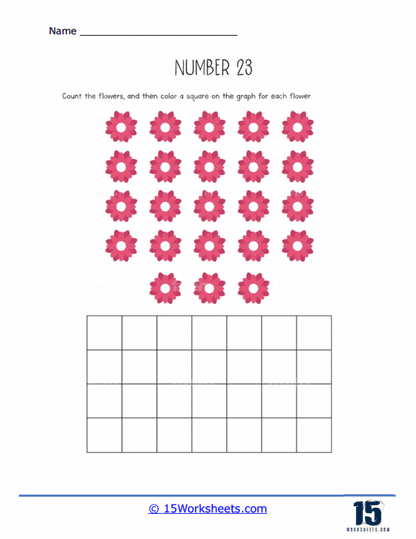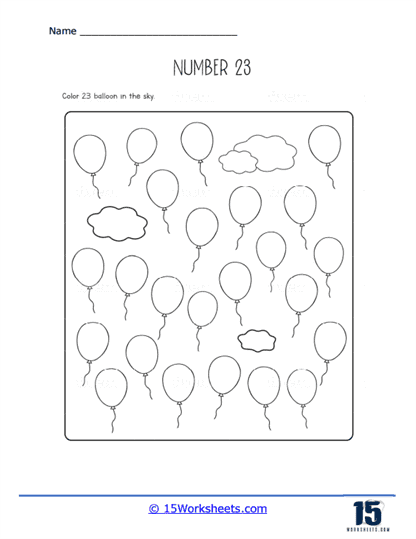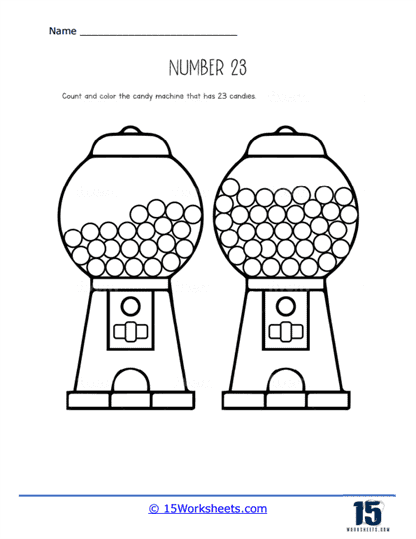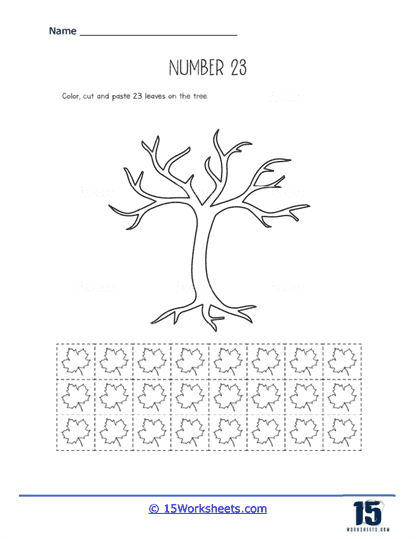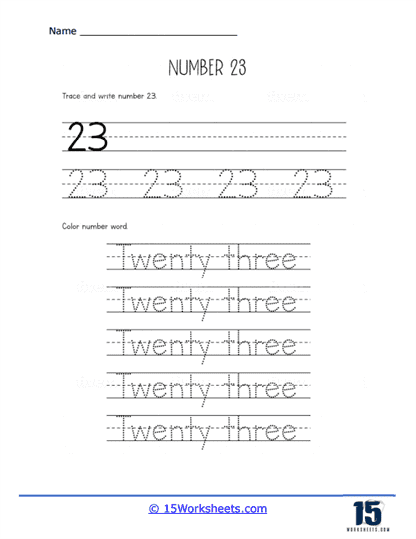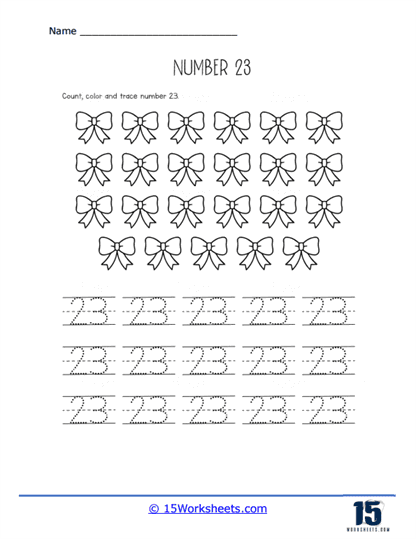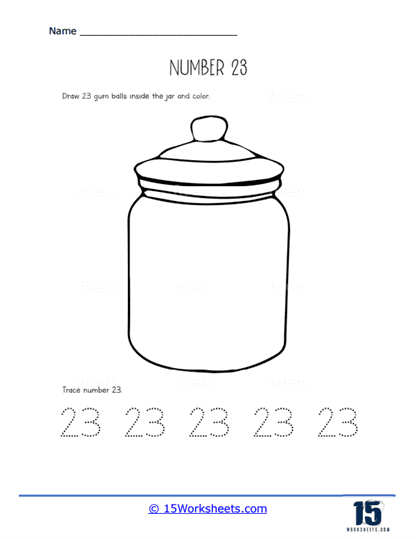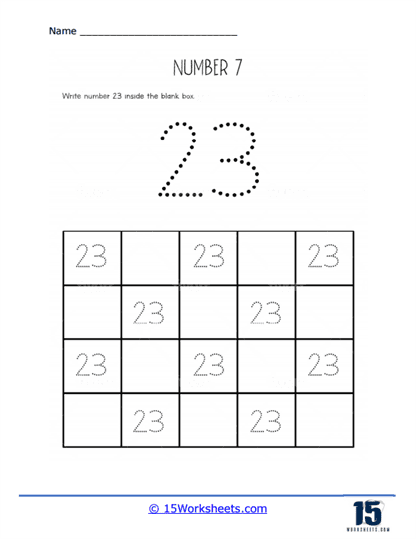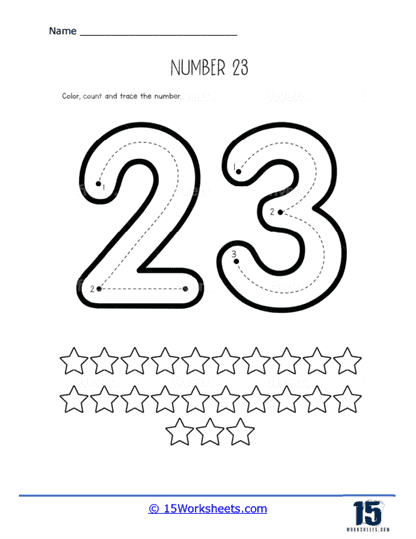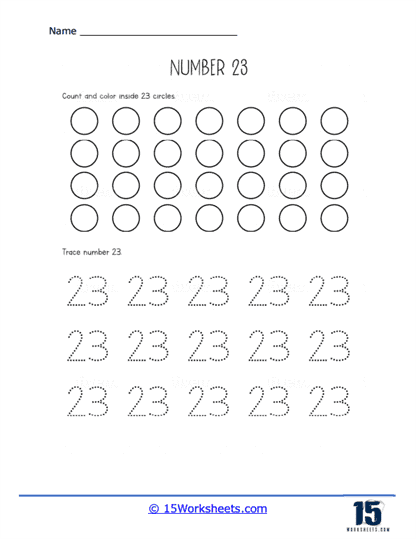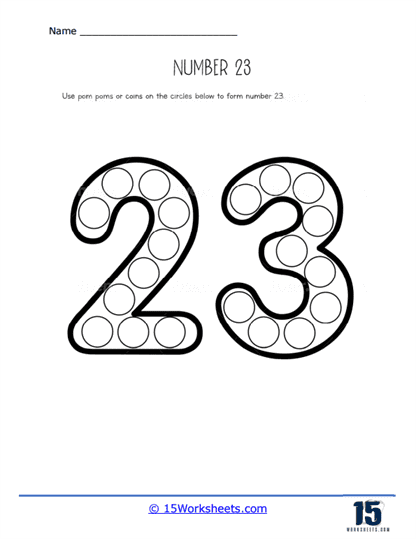Number 23 Worksheets
About These 15 Worksheets
Welcome to a journey of discovery in the fascinating realm of numbers! Learning about numbers can be a thrilling experience, comparable to embarking on an adventure full of wonder and knowledge. Our new exciting tool, the Number 23 Worksheet, helps young learners to navigate this world more efficiently. These dynamic worksheets are bursting with engaging activities that revolve around the number 23. These activities range from counting illustrations of 23 apples and recording the quantity, solving simple arithmetic problems like “10 + 13 = ?”, to number sequences that need the keen eye of the learner to find and circle the number 23.
Enhancing Number Sense with Number 23 Worksheets
Why is the Number 23 Worksheet so crucial to a child’s educational journey, you may ask? These worksheets are not just about understanding the number 23. They are about fostering a critical skill in math learning – number sense.
In the same way that we can predict our pet’s mood from its behavior or forecast rain from observing the sky, number sense allows us to understand the behavior of numbers. This intuitive grasp of numbers and their relationships improves mathematical competency. It enables children to comprehend why certain mathematical facts are the way they are, such as why 20 + 3 equals 23 or why 23 is more significant than 22 but less than 24.
As children gain proficiency in number 23, they are simultaneously learning the general properties of numbers and how they interact. This knowledge can help them navigate more complex mathematical problems. For instance, imagine a game requiring children to leap over 23 stones to cross a river. Having engaged with a Number 23 Worksheet, they can readily break down the task – jump over 10 stones, another 10 stones, and finally 3 more. Voila, they’ve crossed 23 stones because they grasp that 10 + 10 + 3 equals 23!
These worksheets cover a range of activities and exercises, including:
Number Recognition – Children may be asked to identify the number 23 among other numbers or fill in missing instances of the number in a sequence.
Counting – Worksheets may include groups of objects or pictures, and students are tasked with counting how many there are. The number 23 may appear as part of these counting exercises.
Writing and Tracing – Kids can practice writing the number 23 and trace over its shape to improve their fine motor skills.
Basic Operations – More advanced worksheets may introduce simple addition or subtraction problems involving the number 23. For example, students may be asked to add or subtract 23 from other numbers.
Number Patterns – Children can explore number patterns involving 23, such as finding the next number in a sequence or identifying numbers that come before or after 23.

